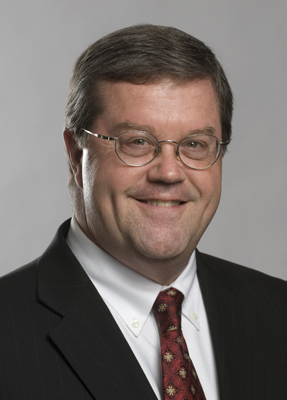 The inboxes at The Terminal received several emails late yesterday afternoon, a couple of them including the responses received by two citizens after they sent in their concerns to Mayor Langford’s office about his proclamation declaring this coming Saturday a citywide day of prayer in sackcloth and ashes. They’re posted over here.
The inboxes at The Terminal received several emails late yesterday afternoon, a couple of them including the responses received by two citizens after they sent in their concerns to Mayor Langford’s office about his proclamation declaring this coming Saturday a citywide day of prayer in sackcloth and ashes. They’re posted over here.
After sleeping on it, maybe I’m not that worried about Saturday evening at Fair Park Arena Friday evening at Boutwell Auditorium – mainly because I’m not sure that getting upset and frustrated will do much to solve the issue at hand. After reading the emails and the responses, it’s clear that there will be no consensus on the issue any time soon.
Now the typos in the proclamation – they bother me. I still haven’t quite gotten to über wordsmith status, but I’ve written more than enough posts to know that what you put out there on paper – whether as a hard copy or virtually, is a visual representation of you as a person. The typos and grammatical errors found in both the proclamation and the email responses from City Hall yesterday speak more about the attention to detail paid to the issues affecting our city currently.
There are times when the Is are dotted and the Ts are crossed, and there are other times when the intention is understood but the follow-through is questionable.
There is no question that the city of Birmingham needs to come together to address the crime epidemic that has us listed as the sixth most dangerous city per capita in the United States by some.
Yes, there is a major role that our area’s religious leaders need to play in getting us out of the moral cesspool that is our inability to believe that life can get better in Birmingham. This is despite the fact that the hours of worship are still one of the most segregated and divisive times in our society today, both in terms of denomination and race (but that’s another post).
Yes, there is even a need for the man that holds the biggest and loudest bully pulpit in the city to use his influence to encourage this dialogue to take place. He could even show up at an event like the one he’s announced for Saturday in his role as the leader of the city and speak of how he supports an initiative.
But I’m certainly not sure if he should be organizing the event himself, whether the money being used to pay for the sackcloth is donated or not.
Everyone agrees that something needs to be done to quell this issue. Langford’s police chief admits that there’s not necessarily a one-solution fixes all approach, but I think that his philosophy is more along the lines of what needs to be the focus of the problem as it exists now.
It’s not that we don’t like some of the things that Mayor Langford is doing. Yesterday’s proposal to pay for city bus services as the heat of the summer and the pain of paying higher prices at the pump both begin to expose themselves to the people of Birmingham was something desperately needed. But as mentioned in today’s Birmingham News article, this proposal will not necessarily encourage new riders to begin to use the system – though taking advantage of rising gas prices to get the word out may just be the incentive needed to expand ridership. Maybe then there would be more voices lent to the case made by the Transit Advisory Committee to improve the system that we currently have.
The ideas are great, however (as we’ve learned here during our short existence) sometimes it’s better to pay attention to the content of the message instead of how it’s being packaged for the audience receiving it.
André Natta is the publisher and managing editor of The Terminal.
What do you think? Let’s hear your thoughts about it over on Magic City Question!





 When Bob Dylan’s famous lament on the nature of hypocrisy first made the charts, those of us who are now called Baby Boomers memorized all the words. Positively 4th Street pretty much laid it all bare and Dylan’s words seemed to capture what we in the 60s thought typified the hypocracy we saw all around us – in the media, in the government, in any institution with authority. What could sum up the youthful, disillusioned attitude of those watershed years better than, “You’ve got a lot of nerve to say you are my friend. When I was down, you just stood there grinning!”
When Bob Dylan’s famous lament on the nature of hypocrisy first made the charts, those of us who are now called Baby Boomers memorized all the words. Positively 4th Street pretty much laid it all bare and Dylan’s words seemed to capture what we in the 60s thought typified the hypocracy we saw all around us – in the media, in the government, in any institution with authority. What could sum up the youthful, disillusioned attitude of those watershed years better than, “You’ve got a lot of nerve to say you are my friend. When I was down, you just stood there grinning!”

A Park-ner-ship for the Future
Much has been said about Birmingham’s ample green space. And it is ample – more than, in fact. To put it simply, we love parks. Parks are a big deal here, and likely to get bigger when we start connecting them all, one to another. But that’s jumping ahead.
Birmingham is a very green city and region – literally. We are doing better these days in the environmental sense of the word also, but for just pure color, green is it in Birmingham. You couldn’t count the shades of green I can see out of my living room or office window. We are blessed with green trees (many of them pines), green shrubery, green-coated mountains and valleys, the underbrush is green (especially in the kudzu growing season), we’re blessed with acres and acres of green grass, green foliage. We even adore fried “green” tomatoes. Face it – we’re green!
Our tradition of dedicating parks to preserve all that green space dates back to the 1920s to the city’s decision to create a Birmingham Park and Recreation Board and to hire the noted Olmstead landscaping firm to create a plan for preserving and enhancing our many parks and open spaces. The firm had a notable track record even then, having developed plans for park space in cities such as Boston and Baltimore. Their recommendation was comprehensive and highly detailed, and you may read about the vision set forth in the Olmstead report in “The Olmstead Vision: Parks for Birmingham,” published by the Birmingham Historical Society in 2006.
At the core of the Olmstead vision was the idea of preserving green space along the streams that flowed through our valleys. In fact, the ridge and valley topography of the Birmingham region lent itself to this concept and is today why there is at least some park space preserved along the Shades Creek Greenway adjacent to Lakeshore Drive in Homewood. Similar plans are in place for greenways along Village Creek and Valley Creek and the preservation of land in the Turkey Creek watershed is continuing. The Olmstead report envisioned the set-aside of land around the creeks and the preservation of that land (and, thus, the preservation of the quality of the water as well).
The creation of some entirely new parks also has gained the public’s attention in recent years, stepped up dramatically in 2006 when United States Steel announced its largest corporate philanthropic gift ever. The steel company agreed to sell more than 2,000 acres of wooded land along the ridge of Red Mountain to a non-profit trust – and offered it at roughly a 50% discount to the appraised value of the land. In addition, U. S. Steel stroked a check in the amount of $1 million to help the park planners get started with their operations. Imagine park space larger than New York City’s Central Park connecting Birmingham to Bessemer along the ridge of Red Mountain where iron ore mines once fed the mills of Jones Valley.
In the city center, just south of the Morris Avenue railroad tracks, a smaller but equally strategic space has been dedicated as a park and preparation for construction is under way there. The Railroad Reservation Park will extend along the south side of the tracks at Morris Avenue two blocks to 2nd Avenue South and east-west between 18th and 14th streets. This park will feature grassy areas, a lake with paddle boats, walking paths and a pedestrian overpass from the park to the soon-to-be-built intermodal transit center on Morris Avenue.
In East Birmingham, the Ruffner Mountain Nature Preserve sits astride Ruffner Mountain – 1,100 acress of woodlands and trails criss-crossing the ridge of the mountain and connecting old mining sites. A new nature center is being constructed with federal funds and park supporters are raising additional funds to add a new 500-acre tract to the park’s holdings.
South of Birmingham is the large Oak Mountain State park, and to our West is Tannehill State Park. Dotted across our landscape are literally hundreds of smaller municipal and “pocket” parks.
In Pittsburgh a couple of years ago, some of us had an opportunity to learn about that city’s parks program and the “string of pearls” concept – an idea that’s also being implemented here. The idea is that parks exist to be enjoyed, and that perhaps linking the park or green spaces can amplify that enjoyment. Thus, a series of walking, hiking, biking trails has been developed (a la the Shades Creek Greenway) to connect the parks – as a string is used to connect pearls. A day can easily be envisioned when one could (if one wished) walk, run or hike from Tannehill State Park on the Tuscaloosa County line through the Red Mountain Park, along greenways to the Railroad Reservation Park, continuing on rail rights-of-way to Ruffner Mountain and, ultimately, on to Cheaha Mountain and the Appalachian Trail.
And why, exactly, is this important? Aside from the enjoyment a park offers, the enhancement of quality of life, the preservation of land and water quality and the general benefits to our health and well-being, setting aside parks and green spaces say something to us about the future. Taking these actions in the 1920s was a way for our forefathers to ensure the sustainability of the city and region while staking a claim to the economic growth that followed. Want a better economy? Build a park and improve people’s lives. Seems to me that the same equation works today, and as we preserve and enjoy the new spaces, we’re making a positive statement about the future we all hope to share in this really green place.
Barry Copeland is executive vice president of the Birmingham Regional Chamber of Commerce. Check out his blog over at Positively 20th Street, where this entry was originally posted on April 21.
3 Comments
Posted in environmental, positively 20th street
Tagged AL, Alabama, Barry Copeland, Birmingham, Commentary, greenspace, positively 20th street, Railroad Reservation Park, Red Mountain Park, Ruffner Mountain, Three parks